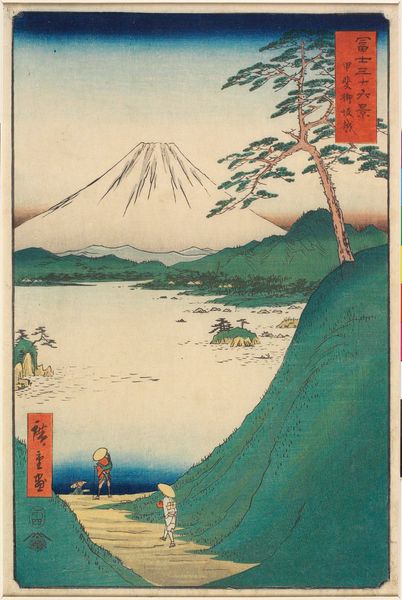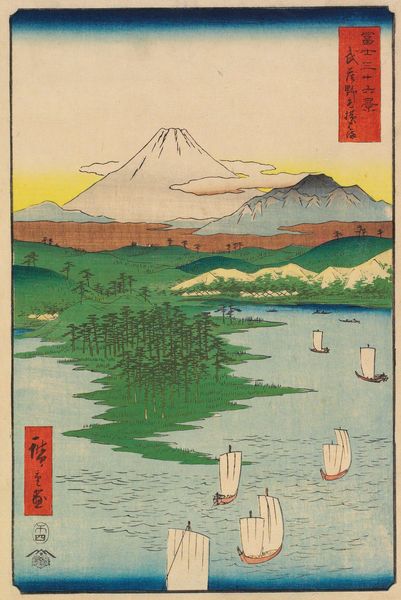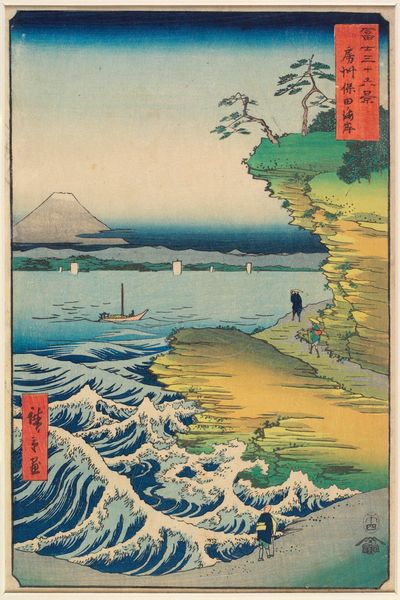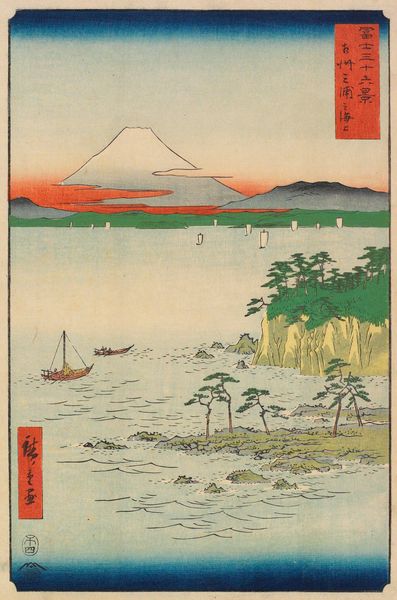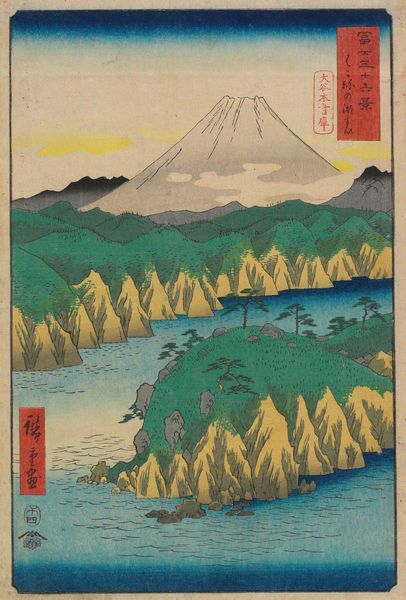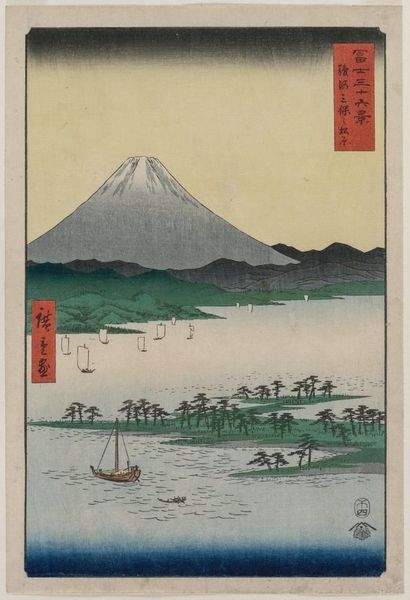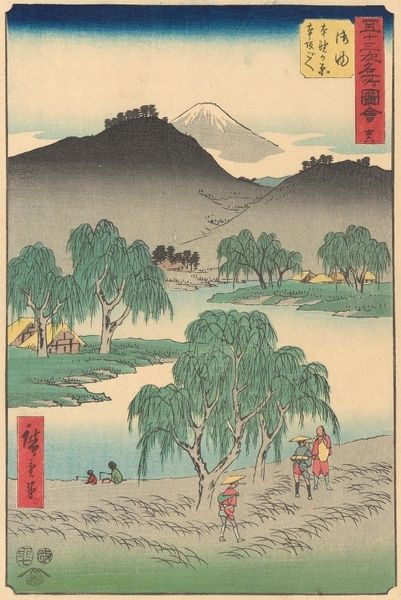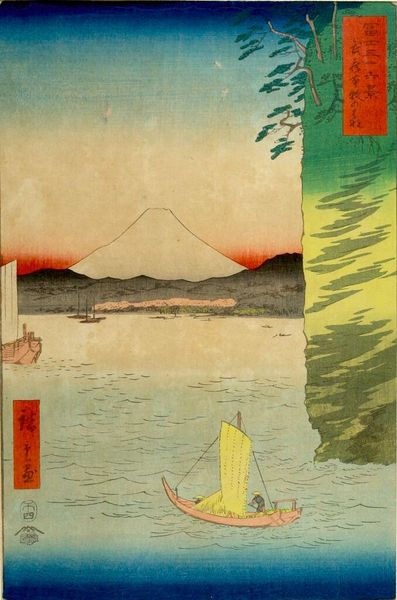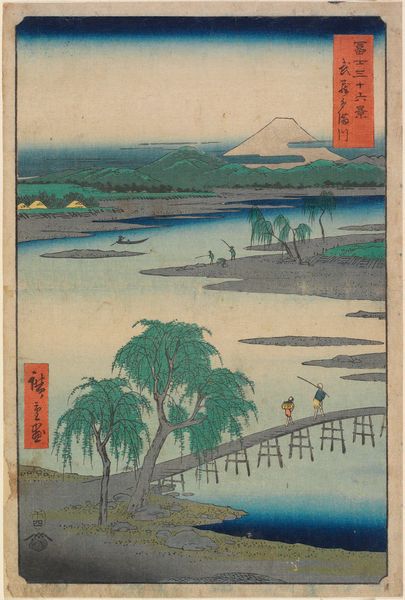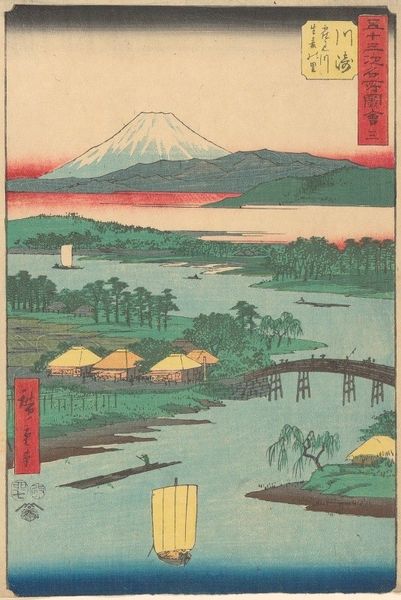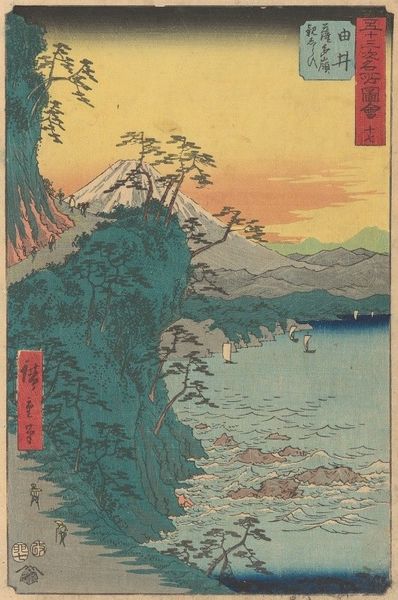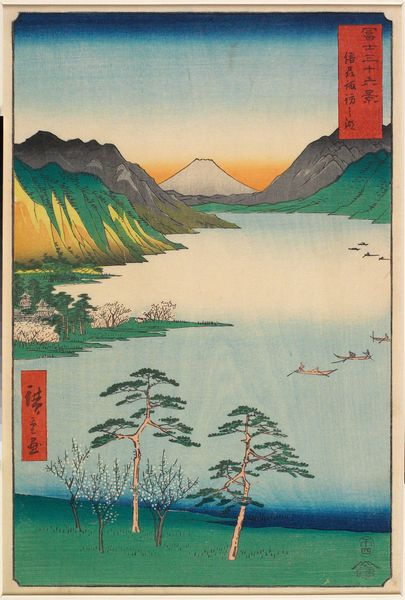
Dimensions: 13 1/4 × 8 3/4 in. (33.7 × 22.2 cm) (image, vertical ōban)
Copyright: Public Domain
Curator: This is Utagawa Hiroshige’s "Honmoku Point in Musashi Province," a woodblock print believed to be from 1858, now residing here at the Minneapolis Institute of Art. Editor: My first impression is how effectively the composition captures depth using subtle color gradations and layering, very serene, almost dreamlike. Curator: Hiroshige's works were pivotal in popularizing ukiyo-e landscapes, influencing perceptions of Edo-period life and broader narratives concerning travel and leisure accessible to the rising middle class. The framing—with the cliff on one side and distant mountain on the other—emphasizes a spatial awareness that echoes contemporary social structures, navigating nature as both sublime and something that is observed. Editor: Yes, but the power resides in the simplification of forms and masterful use of line, don't you agree? Notice how the almost geometrical representation of Mount Fuji contrasts against the detailed rippling waves. It’s this contrast that is really drawing my attention and it adds to the contemplative feel. Curator: I agree that the geometric composition is notable; the symbolic representation of Mount Fuji underscores the socio-political importance of this sacred mountain, acting as both a geographic landmark and an emblem of Japanese identity. It goes further though to think of the fishing boat on the right. Editor: And the placement almost breaks with what a viewer may expect! Look closely—the color choices! From the intense blues at the bottom to that faded sky at the top, the colors have impact and guide our eyes to follow the journey that's portrayed here in this print. Curator: Exactly, consider then how that single vessel, perhaps a worker amidst that social stratification, symbolizes not only their daily survival but also resistance, mirroring the broader struggle of those who challenged established social orders and patriarchal dynamics in society. Editor: I see it more now; focusing solely on visual impact made me initially underestimate the embedded symbolism. Curator: Well, seeing it all, together is important, as always. Thank you.
Comments
No comments
Be the first to comment and join the conversation on the ultimate creative platform.
